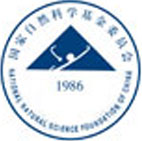 |
PlantRegMap/PlantTFDB v5.0
Plant Transcription
Factor Database
|
| Home TFext BLAST Prediction Download Help About Links PlantRegMap |
The AP2/ERF superfamily is defined by the AP2/ERF domain, which consists of about 60 to 70 amino acids and is involved in DNA binding. These three families have been defined as follows. The AP2 family proteins contain two repeated AP2/ERF domains, the ERF family proteins contain a single AP2/ERF domain, and the RAV family proteins contain a B3 domain, which is a DNA-binding domain conserved in other plant-specific transcription factors, in addition to the single AP2/ERF domain.
It has been demonstrated that the AP2/ERF proteins have important functions in the transcriptional regulation of a variety of biological processes related to growth and development, as well as various responses to environmental stimuli.
Genes in the AP2 family have been shown to participate in the regulation of developmental processes, e.g. flower development, spikelet meristem determinacy, leaf epidermal cell identity, and embryo development.
Toshitsugu Nakano, Kaoru Suzuki, Tatsuhito Fujimura, and Hideaki Shinshi.
Genome-wide analysis of the ERF gene family in Arabidopsis and rice.
Plant Physiol, 2006. 140(2): p. 411-32.
PMID: 16407444
Using an in vitro selection procedure, the DNA binding specificity of the two AP2 repeat containing protein ANT was found to be 5'-gCAC(A/G)N(A/T)TcCC(a/g)ANG(c/t)-3'. This consensus site is much longer than sites recognized by proteins containing a single AP2 repeat and neither AP2 repeat of ANT was alone capable of binding to the selected sequences, suggesting that both AP2 repeats make DNA contacts.
Nole-Wilson S, Krizek BA.
DNA binding properties of the Arabidopsis floral development protein AINTEGUMENTA.
Nucleic Acids Res. 2000 Nov 1;28(21):4076-82. Erratum in: Nucleic Acids Res 2001 Mar 1;29(5):1261.
PMID: 11058102



